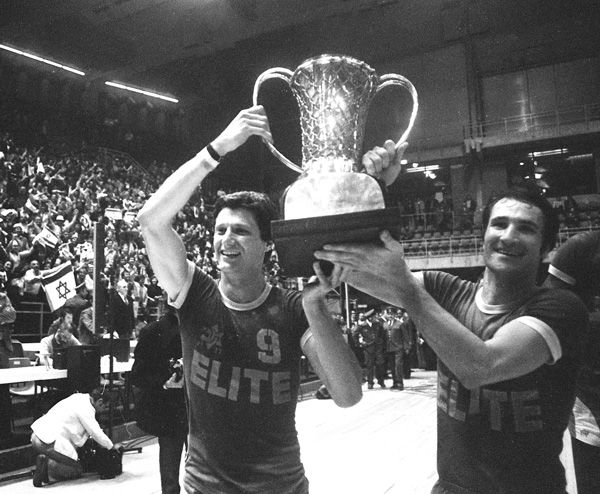‘On the Map’ replays David vs. Ivan hoop miracle
Published June 1, 2017
“On the Map,” a film about the 1977 Maccabi Tel Aviv team that won basketball’s European Championship, could just as easily have been named “The Tal Brody Story” or “Miracle on Hardwood.”
The first alternative title is appropriate because so much of the film revolves around Brody, an American Jew who surrendered a great chance for a National Basketball Association career to build the Tel Aviv team. He was the linchpin not only of the 1977 squad, but those of many years prior. It was his relentless quest for improvement and success that propelled the Israeli squad to its improbable victory.
The second title would have resonated immediately with American audiences, as the experience of the 1977 team holds the same reverence among Israelis as does the “Miracle on Ice” U.S. hockey team, which took the gold medal three years later in the 1980 Winter Olympics, among Americans.
ADVERTISEMENT
Noted Israeli director Dani Menkin tells a mostly linear story about Brody and his teammates, a patchwork of Americans and sabras who had competed nicely, but not particularly strongly, against more talented and experienced teams from Italy, Spain and the Soviet Union during the lead-up to 1977.
Against that progression Menkin sets the chronological sequence of Israel’s proud but threatened existence. He paints the basketball picture in the context of the nation’s relatively young history and the major efforts by its Middle East neighbors to destroy it, with particular emphasis on the Six-Day and Yom Kippur wars.
The film is narrated by a variety of those close to the experience. Brody and his teammates appear quite a bit, along with the widow of one of the players, Jim Boatwright, who passed away in 2013. NBA great Bill Walton is on camera quite a bit, as he played with Brody on the U.S. National Team and considers his migration and commitment to Israel and its basketball scene a signal accomplishment. Former NBA Commissioner David Stern also provides perspective as a Jewish leader in the basketball world. A number of commentators, analysts and producers join in the storytelling as well.
ADVERTISEMENT
One of the most charming stories involves Aulcie Perry, an African-American player cut by the NBA’s New York Knicks and scouted by Maccabi Tel Aviv. The player and his teammates recount how there was a spot on the team for one big man, and the decision came down to Perry and another prospect. But when his rival took four cakes for himself at a team dinner, the other players concluded that Perry was the more selfless player, and he survived the cut and went on to be a major part of both the 1977 and a future championship team.
“On the Map” provides a good and rewarding insight into a sports team that became a cultural phenomenon for a tiny Middle East nation constantly under siege both physically and politically.
One of the regrettable absences in the film, however, is the lack of voices from anywhere other than the Israeli-American “home side.” It would have been very informative to hear some reflections from sports, cultural or political voices from some of the other countries involved in the story. In a David vs. Goliath story, understanding the perspective of the big guy is an important part of the narrative; a Soviet source would have been particularly interesting.
Nevertheless, “On the Map” is an enjoyable film about one of the most surprising achievements of Israeli culture at a time when the little nation was, as usual, under attack from many directions. The championship, and its reflection of the continually buoyant spirit of Israelis, makes for a good time on the hardwood.














